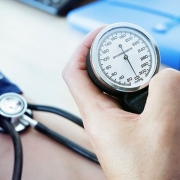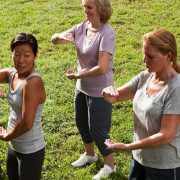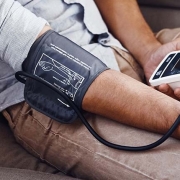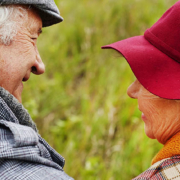Feeling dizzy when you stand up? Simple muscle techniques can effectively manage symptoms of initial orthostatic hypotension
Feeling lightheaded upon standing up due to initial orthostatic hypotension (IOH), or a transient decrease in blood pressure and increase in heart rate, is a common but poorly understood condition. A new study offers two simple cost- and drug-free techniques to effectively manage symptoms of IOH and improve quality of life by activating lower body muscle before or after standing. The research appears in Heart Rhythm, the official journal of the Heart Rhythm Society, the Cardiac Electrophysiology Society, and the Pediatric & Congenital Electrophysiology Society, published by Elsevier.
Syncope, lightheadedness, dizziness, or loss of consciousness from IOH affects up to 40% of the general population (all ages), while presyncope is probably even more common. Despite this, the condition is relatively understudied and there is minimal information available about the underlying mechanisms or symptom management and treatment. Currently, there are very few options available to patients with IOH and no pharmacological treatments. The most common recommendations have been to stand up slowly or sit up first before standing.
“Almost everyone has probably experienced some lightheadedness at some time after standing up,” explained lead investigator Satish R. Raj, MD, MSCI, FHRS, Professor of Cardiac Sciences, Libin Cardiovascular Institute, Cumming School of Medicine, University of Calgary, Calgary, AB, Canada. “For some people this is a frequent occurrence and may happen several times a day, which can be very frightening and negatively impact their quality of life.
“We wanted to explore this further and provide novel and effective symptom management techniques with the goal of improving the IOH patient’s quality of life,” added Dr. Raj.
This study investigated physical maneuvers before or after standing and their efficacy in reducing the drop in blood pressure as well as the symptoms typically seen in IOH patients upon standing. Study participants included 24 young women (mean age 32 ± 8 years) with a high burden history of fainting immediately after standing and more than four episodes of presyncope or syncope per month. The study participants were required to have a significant drop in systolic blood pressure of at least 40mmHg upon standing to fulfill the diagnostic criteria of IOH on the study day. Two participants had inadequate heart rate recordings and were excluded from the analysis.
Twenty-two study participants completed three sit-to-stand maneuvers including a stand with no intervention (control), and two interventions. Researchers found that both lower body muscle preactivation (thighs) through repeated knee raises prior to standing (PREACT) and lower body muscle tensing (thighs and buttocks) through leg crossing and tensing immediately after standing (TENSE) effectively improve the blood pressure drop. This led to a reduction in symptoms upon standing. They found that the PREACT maneuver accomplished this by increasing cardiac output, while the TENSE maneuver did so by increasing stroke volume.

Release date: 09 February 2022
Source: Elsevier









